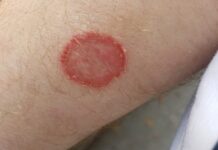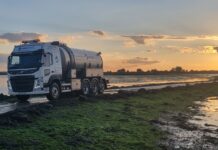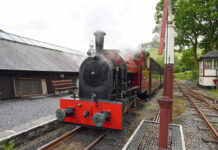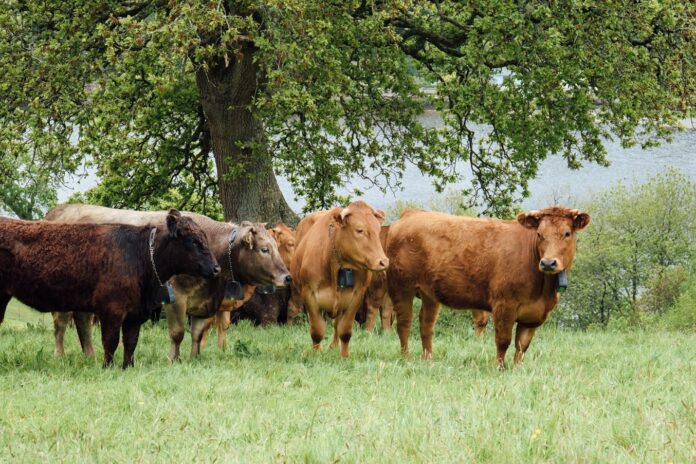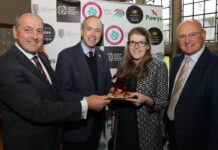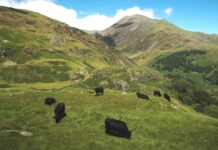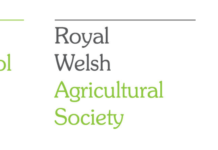
Arable and livestock producers can speak to grazing experts and farmers about the opportunities available when utilising virtual fencing to integrate livestock into arable systems at Groundswell 2022, June 22-23, on the Nofence stand in Pasture Field F1.
Farmers on the stand include organic beef farmer James Waight. Mr Waight has used Nofence for more than a year to graze 110 head of cattle on his farm on the Salisbury Plain in Wiltshire in a Site of Special Scientific Interest.
A global leader in virtual fencing with more than three years of use on UK farms, Nofence uses a combination of GPS, cellular communication, audio signals, and solar power. Using the Nofence smartphone app, virtual fence perimeters can be created and monitored while working with animal behaviour. This allows livestock to graze within set perimeters with no physical fencing.
“When an animal steps over a Nofence boundary, the collars emit an audio cue to warn it of the boundary perimeter. If the animal does not turn around upon hearing the predictable audio cue the collars issue an electric pulse. The collars also track animal location and are developed with solar panels to ensure long-lasting battery life throughout the grazing season,” says Synne Foss Budal, General Manager for Nofence UK. “With Nofence, we train the animals to listen for their fence boundary. So, we are still relying on the animal’s senses to stay within the grazing parameter, but it is hearing rather than visual.”
Opportunities for regenerative agriculture
According to farm consultant James Daniel, Managing Director for Precision Grazing Ltd, Nofence virtual fencing technology is a game-changer for farmers and grazers looking to integrate livestock into arable systems.
“The synergistic relationship between livestock and crop production – forage and arable – is key to setting up a successful and sustainable regenerative system,” explains Mr Daniel. “Cattle and sheep can convert green plants into meat and manure, the latter containing essential nutrients which are stable and highly plant available. Manure is also full of beneficial bacteria which form the basis of healthy soil, therefore helping to rapidly restore the natural fertility and enable key processes.”
Livestock grazing plants keep them in a vegetive (green and leafy) state where photosynthesis is most active, meaning plants are generating the most glucose via photosynthesis.
“Up to 50 percent of this glucose is then supplied through the roots into the soil to feed the bacteria and fungi. This output also helps to bind soil particles together, forming stable aggregates which retain nutrients and water,” says Mr Daniel. “The fertility gains from grazing animals are considerable, with substantial reductions in artificial fertilisers possible. In short, grazing animals are the most effective and profitable method for regenerating low fertility soils whilst also eliminating weed and plant disease issues. The use of livestock is essential, particularly if the farm does not have access to other sources of organic manures.”
Overcoming infrastructure challenges
While highly beneficial to a regenerative system, integrating livestock into crop production comes with a lot of management challenges. According to Mr Daniel, the main ones are lack of fencing, management resource and the ability to monitor individual animals.
“The ability to set grazing perimeters on the Nofence app, track each animal’s location and movement, and graze without physical fencing has made Nofence a good option for a lot of regenerative systems,” explains Mr Daniel.
To learn about the opportunities Nofence offers regenerative systems, visit the Nofence stand in Pasture Field F1 at Groundswell 2022.
To learn more about Nofence, visit nofence.co.uk
Help keep news FREE for our readers
Supporting your local community newspaper/online news outlet is crucial now more than ever. If you believe in independent journalism, then consider making a valuable contribution by making a one-time or monthly donation. We operate in rural areas where providing unbiased news can be challenging. Read More About Supporting The West Wales Chronicle






